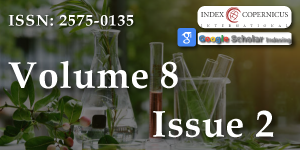Potential of Herbarium-based Phenological Studies to Predict the Climate Change Impacts
Main Article Content
Abstract
Herbarium records provide a valuable historical database for assessing plant phenology shifts in the context of global climate change. The herbarium specimens, collected from diverse locations and periods, offer comprehensive data illustrating how many plants are altering their blooming times in response to global climate change. The appropriate use and analysis of long-term herbarium records offer an additional dimension for the study of plant phenology through the application of advanced experimental methodologies such as bioinformatics and satellite imagery, statistics, and Artificial Intelligence (AI) which, coupled with field observations, will improve ecosystems evaluation. These efforts can significantly contribute to conservation strategies and climate change mitigation and further support the synchronization of scientific inputs for evaluating the impacts of climate change and its ecological implications.
Article Details
Copyright (c) 2024 Gaira KS, et al.

This work is licensed under a Creative Commons Attribution 4.0 International License.
The Journal of Plant Science and Phytopathology is committed in making it easier for people to share and build upon the work of others while maintaining consistency with the rules of copyright. In order to use the Open Access paradigm to the maximum extent in true terms as free of charge online access along with usage right, we grant usage rights through the use of specific Creative Commons license.
License: Copyright © 2017 - 2025 |  Open Access by Journal of Plant Science and Phytopathology is licensed under a Creative Commons Attribution 4.0 International License. Based on a work at Heighten Science Publications Inc.
Open Access by Journal of Plant Science and Phytopathology is licensed under a Creative Commons Attribution 4.0 International License. Based on a work at Heighten Science Publications Inc.
With this license, the authors are allowed that after publishing with the journal, they can share their research by posting a free draft copy of their article to any repository or website.
Compliance 'CC BY' license helps in:
| Permission to read and download | ✓ |
| Permission to display in a repository | ✓ |
| Permission to translate | ✓ |
| Commercial uses of manuscript | ✓ |
'CC' stands for Creative Commons license. 'BY' symbolizes that users have provided attribution to the creator that the published manuscripts can be used or shared. This license allows for redistribution, commercial and non-commercial, as long as it is passed along unchanged and in whole, with credit to the author.
Please take in notification that Creative Commons user licenses are non-revocable. We recommend authors to check if their funding body requires a specific license.
Primack D, Imbres C, Primack RB, Miller-Rushing AJ, Tredici PD. Herbarium specimens demonstrate earlier flowering time in response to warming in Boston. Am J Bot. 2004;91:1260-1264. Available from: http://dx.doi.org/10.3732/ajb.91.8.1260
Bolmgren K, Lonnberg K. Herbarium data reveal an association between fleshy fruit type and earlier flowering time. Int J Plant Sci. 2005;166:663-670. Available from: https://doi.org/10.1086/430097
Miller-Rushing AJ, Primack RB, Primack D, Mukunda S. Photographs and herbarium specimens as tools to document phenological changes in response to global warming. Am J Bot. 2006;93:1667-1674. Available from: http://dx.doi.org/10.3732/ajb.93.11.1667
Gallagher RV, Hughes L, Leishman MR. Phenological trends among Australian alpine species: using herbarium records to identify climate-change indicators. Aust J Bot. 2009;57:1-9. Available from: https://doi.org/10.1071/BT08051
Neil KL, Landrum L, Wu J. Effects of urbanization on flowering phenology in the metropolitan phoenix region of USA: findings from herbarium records. J Arid Environ. 2010;74:440-444. Available from: http://leml.asu.edu/jingle/Wu-Publications-PDFs/2010/Neil_etal-2010-Urbanztn+phenology+herbariumRcds.pdf
Robbirt KM, Davy AJ, Hutchings MJ, Roberts DL. Validation of biological collections as a source of phenological data for use in climate change studies: a case study with the orchid Ophrys sphegodes. J Ecol. 2011;99:235-241.
Gaira KS, Rawal RS, Rawat B, Bhatt ID. Impact of climate change on the flowering of Rhododendron arboreum in central Himalaya, India. Curr Sci. 2014;106:1735-1738.
Davis CC, Willis CG, Connolly B, Kelly C, Ellison AM. Herbarium records are reliable sources of phenological change driven by climate and provide novel insights into species’ phenological cueing mechanisms. Am J Bot. 2015;102:1-11. Available from: https://doi.org/10.3732/ajb.1500237
Park DS, Lyra GM, Ellison AM, Maruyama RKB, Torquato DDR, Asprino RC, et al. Herbarium records provide reliable phenology estimates in the understudied tropics. J Ecol. 2022. Available from: https://harvardforest.fas.harvard.edu/sites/default/files/ellison-pubs/2021/Park_etal2023-JEcol.pdf
Hassan T, Gulzar R, Hamid M, Ahmad R, Waza SA, Khuropo AA. Plant phenology shifts under climate warming: a systematic review of recent scientific literature. Environ Monit Assess. 2024;196:36. Available from: https://doi.org/10.1007/s10661-023-12190-w
Gaira KS, Dhar U, Belwal OK. Potential of herbarium records to sequence phenological pattern–a case study of Aconitum heterophyllum Wall. in the Himalaya. Biodivers Conserv. 2011;20:2201-2210. Available from: http://dx.doi.org/10.1007/s10531-011-0082-4
Banaszak C, Grinath JB, Herlihy CR. Chilling consequences: Herbarium records reveal earlier reproductive phenology of winter annual gladecress in a wetter, cooler climate. Plants People Planet. 2020;2:340-352. Available from: https://doi.org/10.1002/ppp3.10095
Gaira KS, Dhar U. Phenological change modelling for selected Himalayan medicinal herbs using herbarium records: A case study. Ecol Inform. 2020;60:101177. Available from: http://dx.doi.org/10.1016/j.ecoinf.2020.101177
Ahlstrand NI, Primack RB, Tøttrup AP. Correction to: A comparison of herbarium and citizen science phenology datasets for detecting response of flowering time to climate change in Denmark. Int J Biometeorol. 2022;66:863. Available from: https://link.springer.com/article/10.1007/s00484-022-02272-8
Khan S, Gaira KS, Asgher M, Verma S, Pant S, Agrawala DK, et al. Temperature Induced Flowering Phenology of Olea ferruginea Royle: A Climate Change Effect. Sustainability. 2023;15:6936. Available from: https://doi.org/10.3390/su15086936
Park IW, Ramirez-Parada T, Record S, Davis C, Ellison AM, Mazer SJ. Data from: Herbarium data accurately predict the timing and duration of population-level flowering displays. Dryad Digital Repository. 2024.
Freimuth J, Bossdorf O, Scheepens JF, Willems FM. Climate warming changes synchrony of plants and pollinators. Proc Biol Sci. 2022;289:20212142. Available from: https://doi.org/10.1098/rspb.2021.2142
Stucky BJ, Guralnick R, Deck J, Denny EG, Bolmgren K, Walls R. The Plant Phenology Ontology: A New Informatics Resource for Large-Scale Integration of Plant Phenology Data. Front Plant Sci. 2018;9:517. Available from: https://doi.org/10.3389/fpls.2018.00517
Park IW. Digital herbarium archives as a spatially extensive, taxonomically discriminate phenological record; a comparison to MODIS satellite imagery. Int J Biometeorol. 2012;56:1179-1182. Available from: https://doi.org/10.1007/s00484-012-0521-2

